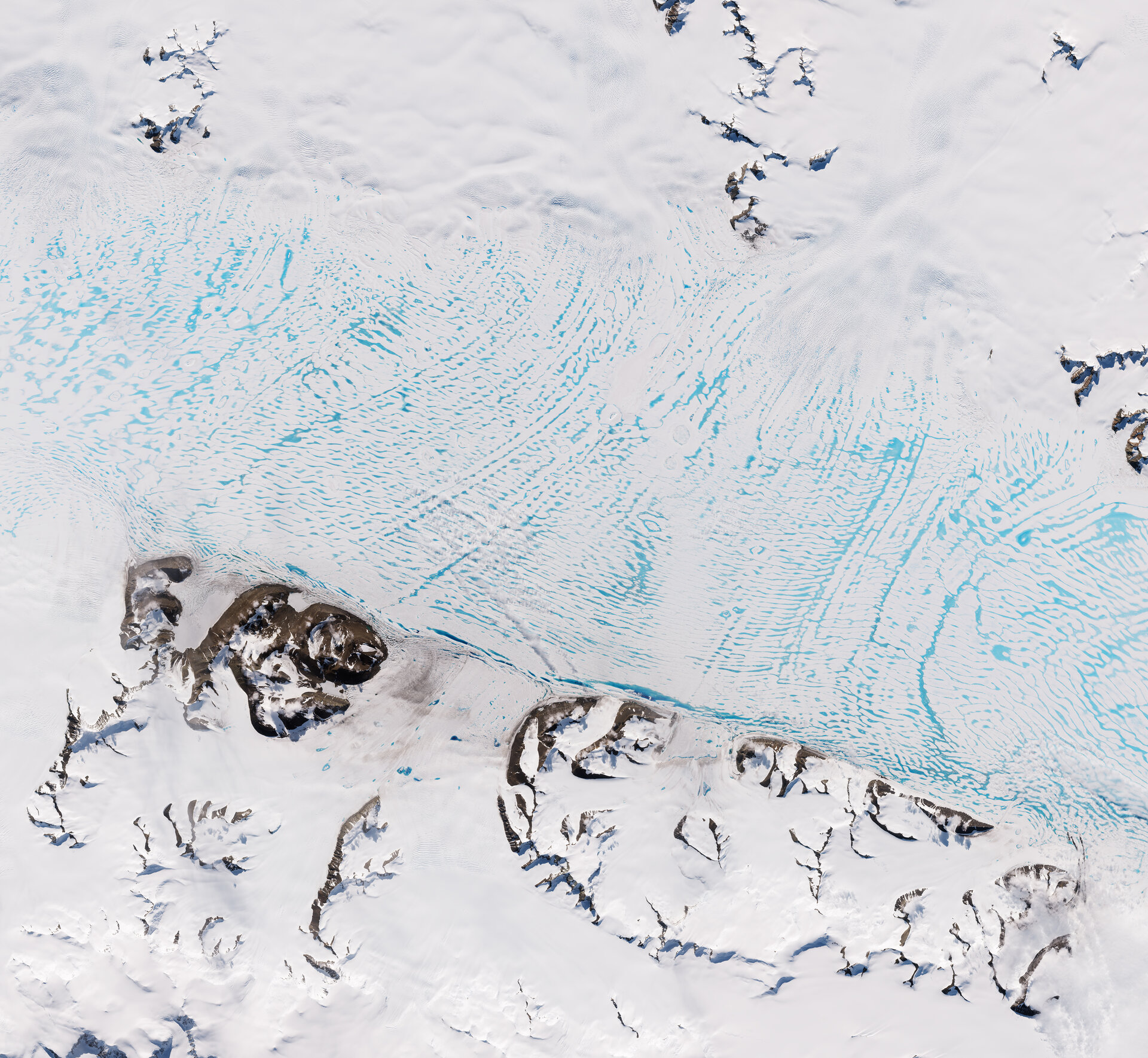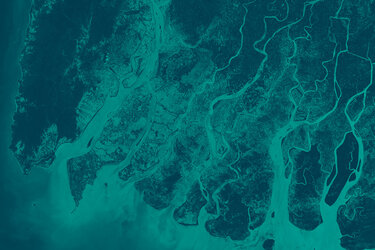Seasonal changes in Antarctic ice sheet flow dynamics detected for the first time
Certain estimates of Antarctica’s total contribution to sea-level rise may be over, or even underestimated, after researchers detected a previously unknown source of ice loss variability. In a new paper published in The Cryosphere, researchers using Copernicus Sentinel-1 data, found that glaciers feeding the George VI Ice Shelf speed up by approximately 15% during the Antarctic summer. This is the first time that such seasonal cycles have been detected on land ice flowing into ice shelves in Antarctica.
Although it is not unusual for ice flow in the Arctic regions to speed up during summer, scientists had previously assumed that ice in Antarctica wasn’t subject to the same seasonal movements. This was partly because temperatures remain below freezing for most of the year, but also due to the lack of systematic monitoring of ice flow over the continent’s ice margins.
Prior to the detailed records of ice speed made possible by Sentinel-1 satellites, scientists wanting to study short-term variations in Antarctic-wide ice flow relied on information collected by optical satellites such as NASA’s Landsat 8.
The advantage of radar as a remote sensing tool is that it can image Earth’s surface through rain and cloud, and regardless of whether it is day or night. This is particularly useful for monitoring areas prone to long periods of darkness.
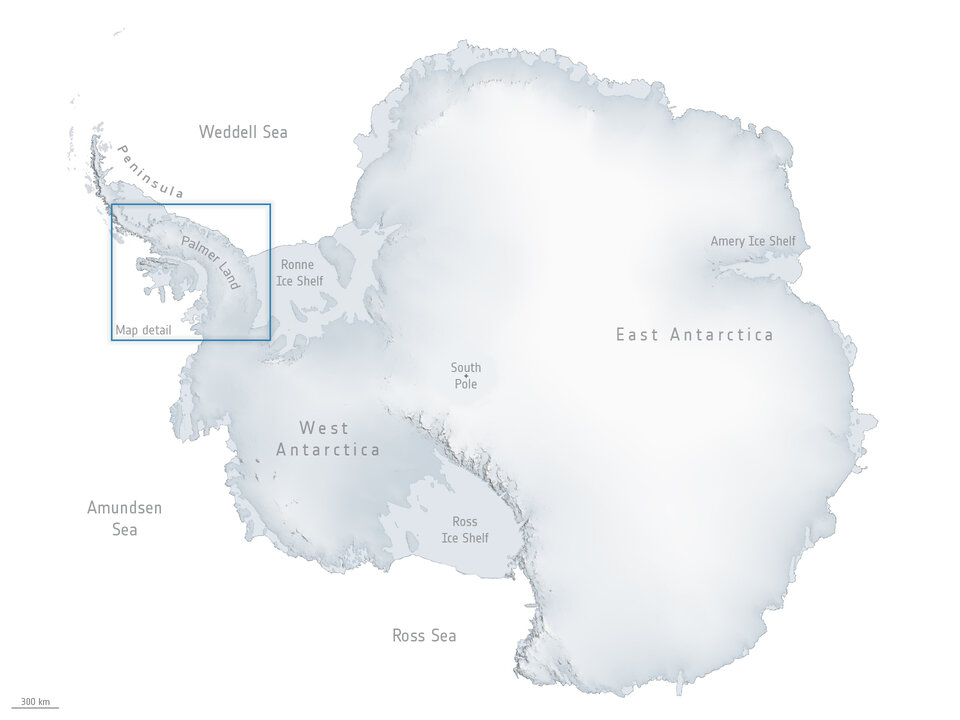
Thomas Nagler, co-author of the paper and ENVEO’s CEO, commented, “Optical measurements can only observe Earth’s surface on cloud-free days during summer months, but by using Sentinel-1 radar imagery, we were able to discover seasonal ice-flow change thanks to the ability of these satellites to monitor year-round and in all-weather conditions.”
The causes of these seasonal changes are uncertain. They could be caused by surface meltwater reaching the base of the ice, acting as a lubricant, or it could also be due to relatively warm ocean water melting the ice from below, thinning the floating ice and allowing upstream glaciers to move faster.
These results imply that similar seasonal variability may exist at other, more vulnerable sites in Antarctica, such as the Pine Island and Thwaites glaciers in West Antarctica.
Co-author Ian Willis said, “It’s the first time this seasonal signal has been found on the Antarctic Ice Sheet, so the questions it raises regarding the possible presence and causes of seasonality elsewhere in Antarctica are really interesting. We look forward to taking a closer look at, and shedding light on, these important questions.”
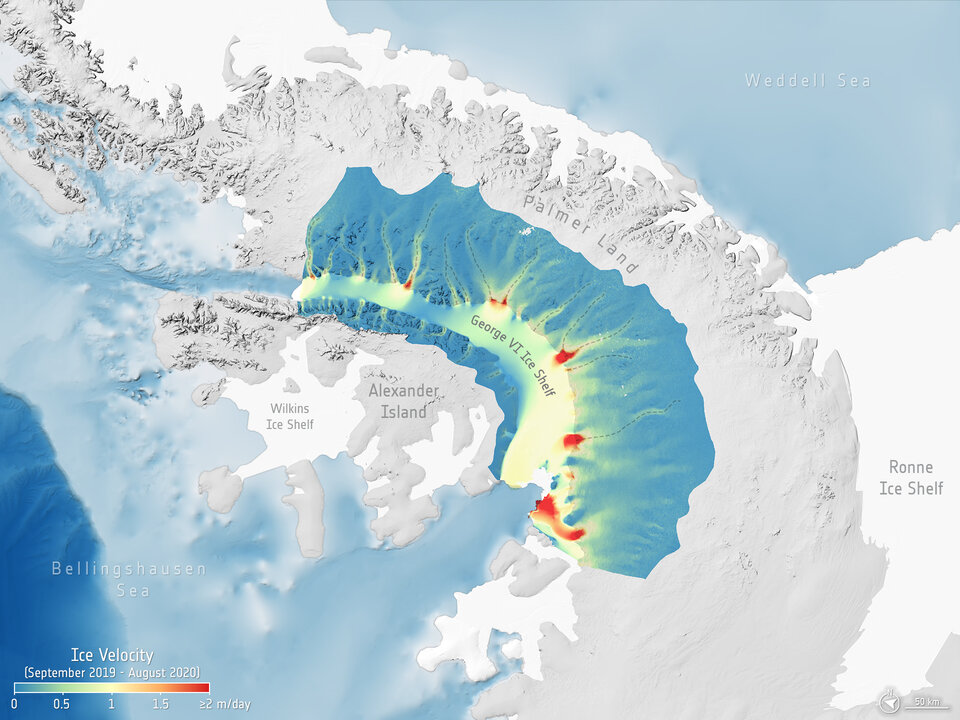
Radar vision
Sentinel-1A was the first satellite to be launched for Copernicus – the Earth observation component of the European Union’s space programme. Carrying advanced radar technology and providing an all-weather, day-and-night supply of imagery of Earth’s surface, the ambitious Sentinel-1 mission raised the bar for spaceborne radar and set the stage for Europe’s Copernicus programme.
Mark Drinkwater, Head of the ESA’s Earth and Mission Science Division commented: “Systematic, year-round monitoring of Antarctica with the Copernicus Sentinels has revolutionised our insight into the variability in ice-sheet behaviour on shorter timescales than ever before.”
Over the last decades, the Antarctic Peninsula ice has undergone some of the most dramatic changes in response to climate warming. While we often think that what happens in Antarctica won’t affect us in Europe, the environmental changes happening in Antarctica will be felt at a global scale. When the ice sheets melt, sea level around the planet will rise – displacing millions of people and dramatically changing coastlines.
This new evidence of a connection between Antarctic circumpolar ocean conditions and seasonal ice flow sheds new light on the regional factors contributing to dynamic ice loss and sea-level rise.
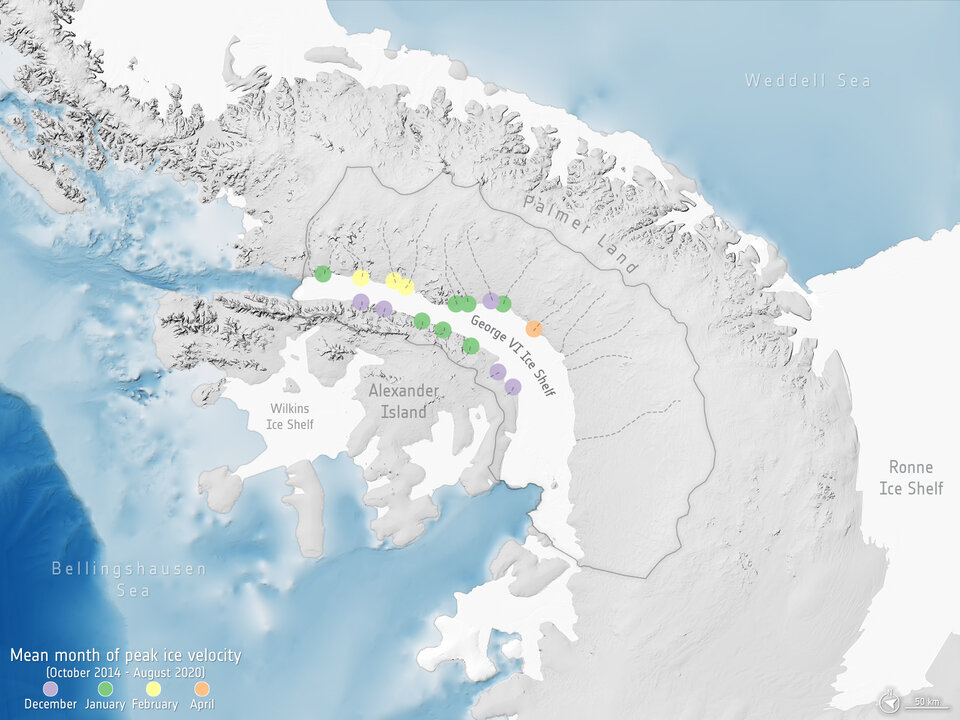
At the forthcoming ESA Council at Ministerial Level in November, ESA seeks a second phase of funding for its Copernicus Space Component Programme, enabling the first satellites of the Next Generation Sentinel-1 and Sentinel-3 Topography series to be developed and further securing the outlook for long-term persistent monitoring of Antarctic ice sheet.
With the Next Generation of the Copernicus Sentinels, together with the ROSE-L, CRISTAL and CIMR Sentinel Expansion missions already in development, Drinkwater added that their combined capabilities are going to provide critical input data for ESA’s pilot Digital Twin Antarctica and the Destination Earth (DestinE) initiatives. These digital replicas will in turn will enable us to better predict the speed and consequences of the ice sheet’s demise.















 Germany
Germany
 Austria
Austria
 Belgium
Belgium
 Denmark
Denmark
 Spain
Spain
 Estonia
Estonia
 Finland
Finland
 France
France
 Greece
Greece
 Hungary
Hungary
 Ireland
Ireland
 Italy
Italy
 Luxembourg
Luxembourg
 Norway
Norway
 The Netherlands
The Netherlands
 Poland
Poland
 Portugal
Portugal
 Czechia
Czechia
 Romania
Romania
 United Kingdom
United Kingdom
 Slovenia
Slovenia
 Sweden
Sweden
 Switzerland
Switzerland


























